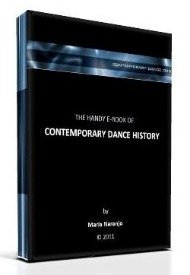What is the duration of an action according to Laban’s theory?
by Cathrine
(United Kingdom)
Dear Maria,
I read your very interesting article about Laban's effort qualities. I am new to the theory as I started reading it a few months ago and have little physical experience of it. I have a lot of questions but will just refer to the more 'burning' ones here.
When you say that a dancer may carry out an action in 3 counts do these counts refer to the duration of the action? If I have an arm swing followed by a waltz pattern and I count: 1,2,3(swing to one side),2,2,3 swing to the other side then 3,2,3 waltz etc. Is this the metric rhythm (if I don't use music) or the duration?
If the first step is a gliding action (not Glide) like a chasse followed by two quick steps (with the accent on the chasse) do we still get the 3 count pattern with the first (gliding step) LONGER and the other two SHORTER, in order to make up the pattern? Finally, what would be the duration of the swing? one longer(in the downward action of the arms)2,3 shorter as they come up?
Please forgive my very basic understanding; I am just a beginner. I look forward to hearing from you. Regards, Cathrine
Comments for What is the duration of an action according to Laban’s theory?
|
||
|
||
The handy e-book of CONTEMPORARY DANCE HISTORY:
The Dance Thinker is our occasional E-zine. Fill in the form below to receive it for free and join us.
Read:
"The Dance Thinker"
BACK ISSUES
Post contemporary dance announcements (workshops, auditions, performances, meetings and important news... it is free.)



